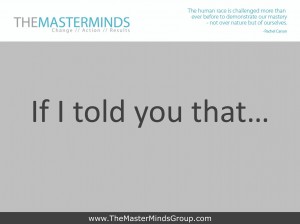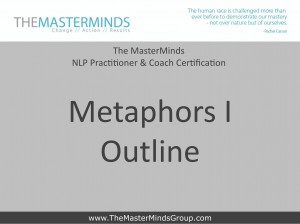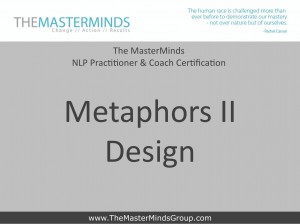Metaphors have a fantastic power of transformation! Milton Erickson (lesson 11) used them ALL THE TIME with surprisingly fast and long-lasting results. If you know how to construct and utilise metaphors appropriately, your effectiveness will really increase exponentially, whatever you do (business, education, therapy etc…). I promise! 🙂
First you may want to know about the ONE very fundamental psychological rule why metaphors work. It was discovered in 1927 by a psychologist while he was sitting in a coffee-shop. He was casually glancing at people around him, the waiters going back and forth and suddenly he noticed something. So he REALLY started to look and listen. And it came to him, it has been there all along but he had not noticed! Want to know what? Watch the short video below.

How to create a metaphor? Watch this video.

How to design a Metaphor (this will remind you of something!)

And watch this video of a story teller on TED, Andrew Stanton who wrote the 3 Toy Stories and E-Wall, telling you what he knows about story telling.
ASSIGNMENT: Prepare 3 stories to bring to the training. Those are pieces of your own life, moments of importance that have a deep meaning for you. First, write them down as they come with as much details as possible (aim for at least 1 page each). Leave it aside for a few days for the deeper meaning to sink in. Then 1. review their structure make sure the elements listed in the videos above are there. 2. List out all the problems and the resources to solve those problems that are present in the metaphors. Leave them aside for a few days. 3. read through the metaphors again and make sure you deliver (tell) each of them to at least one person before you come to the training.